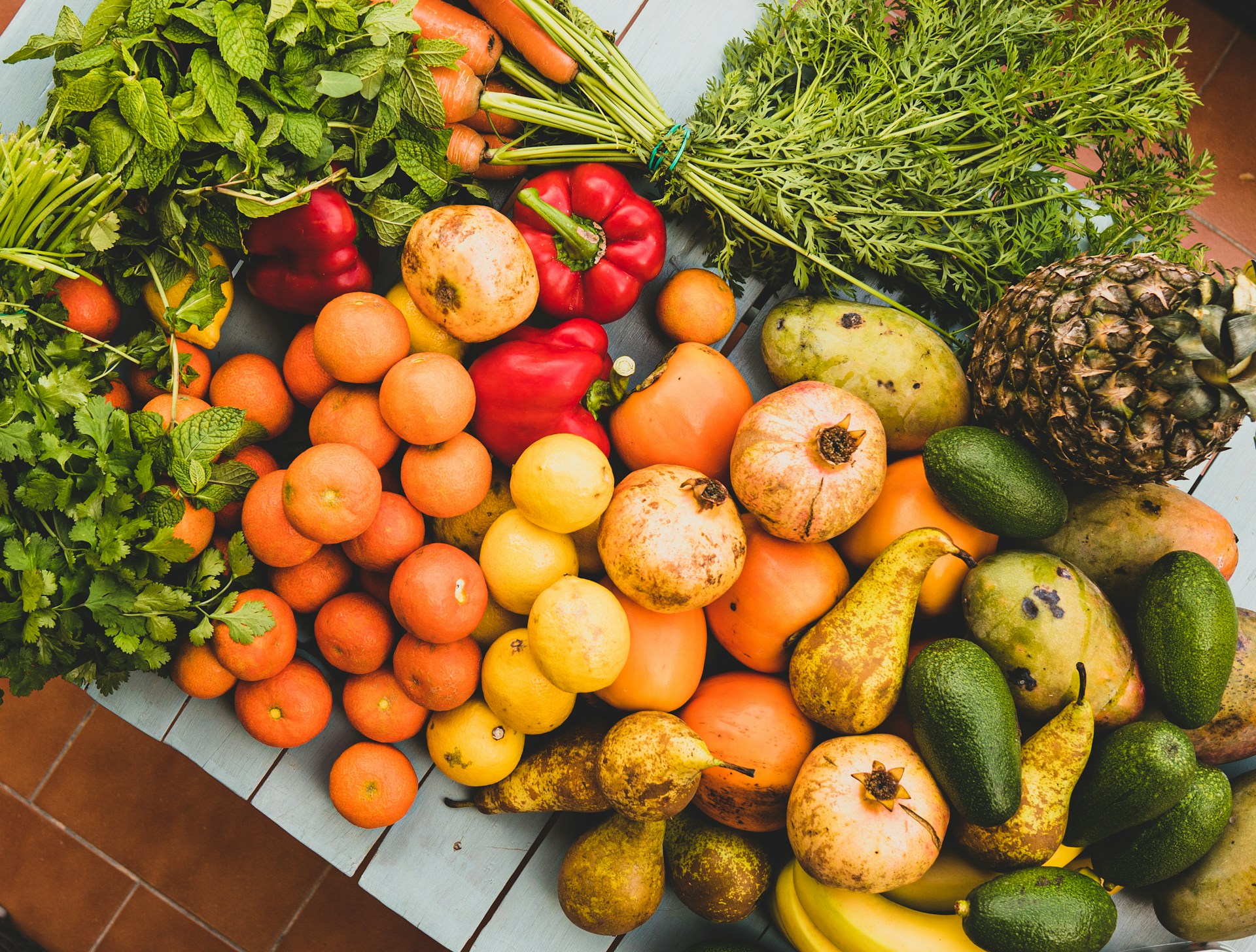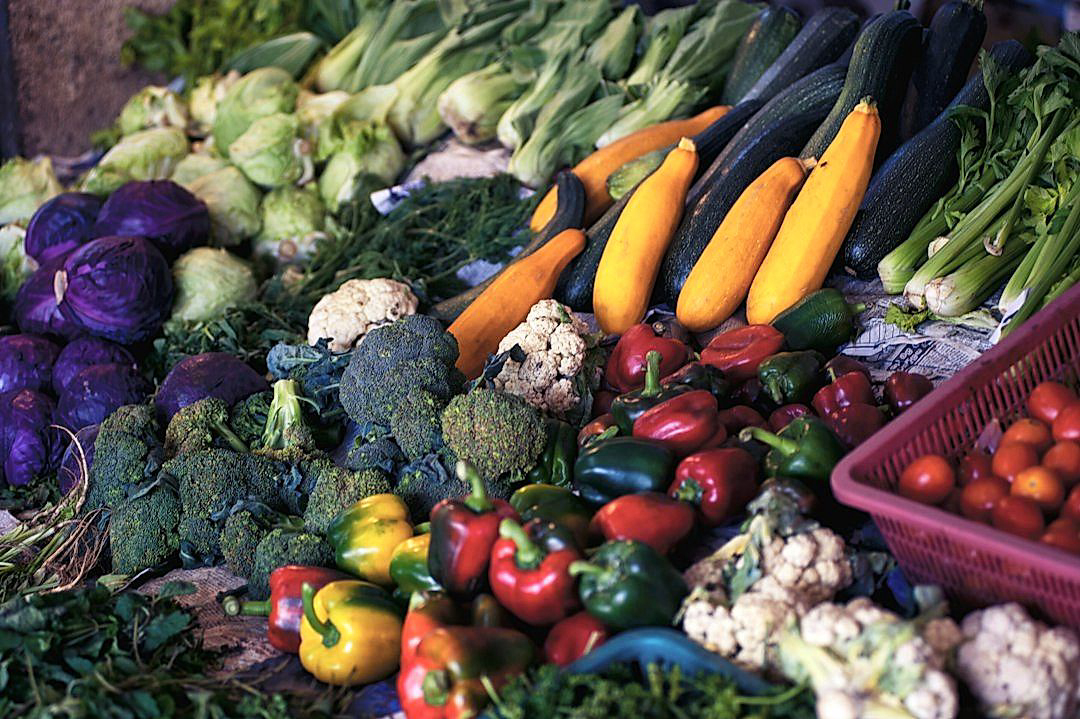In the world of trade, reliability and time-efficiency are paramount, especially when dealing with perishable goods like produce.
An effective strategy for shipping such goods can be the crucial difference between profit and loss.
Missteps can lead to unfortunate spoilage, delivery delays, and looming dissatisfaction for your customers.
The importance of establishing dependable shipping routes cannot be overstated.
This blog will provide valuable insights to help with this crucial aspect of your business operation.
With the right knowledge and tactics, optimal shipping routes for produce will no longer be a pipe dream, but a reality.
Contents
- Tips For Establishing Reliable Shipping Routes For Produce
- 1. Identify Stable and Reliable Suppliers
- 2. Ensure Climate-controlled Transportation
- 3. Consider proximity to reduce transport time.
- 4. Implement tracking systems for shipments
- 5. Regularly Inspect Transports for Cleanliness
- 6. Invest in Insurance for Potential Losses
- 7. Diversify your transport methods.
- 8. Maintain Regular Contact with Transporters
- 9. Provide Clear Instructions to Transportation Providers
- 10. Establish Contingency Plans for Disruptions
- The Bottom Line
Tips For Establishing Reliable Shipping Routes For Produce
1. Identify Stable and Reliable Suppliers
One of the most significant steps in establishing reliable shipping routes for produce is to identify stable and reliable suppliers.
This begins with conducting thorough and meticulous research into possible suppliers to ascertain their credibility and reliability.
You must explore their track records, reputation, and level of experience in the industry.
It’s also crucial to understand their ability to maintain the quality and freshness of the produce during the entire shipping process.
Looking at the supplier’s history, you should consider their stability in terms of supply consistency, especially during peak seasons or unforeseen circumstances.
Stability in supply is essential in the perishable goods industry as it helps ensure that there’s a constant inflow of produce, which prevents stockouts and disappointed consumers.
This means that your supplier must have strong relationships with farmers and growers and must be able to manage organic produce’s seasonality.
Another critical factor is a supplier’s commitment to ethical and sustainable agriculture practices, which have a significant impact on produce quality.
Ensure you check the supplier’s certificates and accreditations, such as Global GAP or Organic Certifications.
You should also evaluate a potential supplier’s financial standing to ensure they can handle large orders or withstand potential economic downturns or disruptions.
Furthermore, have transparent conversations with potential suppliers about their payment terms and conditions.
Remember that good supplier relationships often hinge on clear and mutually beneficial terms.
It may also be beneficial to ask potential suppliers for references or testimonials from other clients.
This can provide you with firsthand insight into the supplier’s punctuality, responsiveness, quality control procedures, and overall reliability.
In an ever-evolving global marketplace, it’s vital to establish long-term relationships with suppliers who can adapt to changing circumstances and uphold their commitment to providing top-quality produce.
A continuation of these measures will ensure a reliable supply chain, guarantee the freshness and quality of your produce, and ultimately enhance customer satisfaction.
2. Ensure Climate-controlled Transportation
Transporting perishable goods like produce requires special measures and considerations in order to ensure they reach their destination in optimal conditions.
The single most important factor in this regard is maintaining an appropriate climate within the transport containers.
For this reason, it is of utmost importance to carefully consider the sort of transportation that one employs for the shipment of these goods.
Typically, vehicles with climate-control capabilities are used in the transportation of produce.
Examples of such vehicles include refrigerated trucks and ocean freight containers.
These vehicles have the capability of maintaining stable temperatures in order to ensure that the quality of the produce is not negatively affected during transportation.
Therefore, in order to establish reliable shipping routes for produce, it is crucial that you ensure climate-controlled transportation for your goods.
To make this happen, it may be necessary to invest in equipment that can regulate temperatures within your transport vehicles.
This could involve anything from installing insulation in your vehicles to purchasing special climate-control devices.
Strategically planning the loading of the vehicle to reduce temperature fluctuations can also be a vital strategy for maintaining the freshness of the produce.
Additionally, the selected vehicles should have systems in place for monitoring and regulating humidity levels as this is another key factor in keeping produce fresh.
Moreover, it can be beneficial to use vehicles that have capabilities for rapid cooling or heating, as necessary, to respond to changes in external temperatures and prevent spoilage of the produce.
All of these factors combined ensure that the produce is protected from damage due to changes in temperature, thus significantly enhancing the reliability of your shipping routes.
Proper training of the staff responsible for loading, driving, and unloading the produce can also contribute greatly to the success of this climate-controlled transportation strategy.
In summary, ensuring climate-controlled transportation is a major factor in establishing reliable shipping routes for produce, and requires careful planning and investment.
3. Consider proximity to reduce transport time.
The global logistics industry is a rapidly evolving sector, requiring constant adjustments to stay efficient and competitive.
In the realm of produce transportation, proximity to markets is a significant factor that can impact the freshness and quality of the goods.
When establishing reliable shipping routes for produce, a key consideration should be limiting the distance that the goods must travel.
Shorter distances not only reduce transportation time but also minimise the risk of spoilage and ensure product freshness, a critical factor for produce.
From the growers to the consumers, each leg of the journey can potentially introduce delays and unforeseen challenges.
However, closer proximity between points in the supply chain can limit these risks.
Moreover, shorter transport times can significantly reduce costs associated with fuel, labor, and vehicle maintenance.
It’s crucial that businesses carefully analyse their distribution strategy and network, and identify opportunities to move closer to their customers or markets.
Establishing a network of regional distribution centers can be an effective strategy to reduce transit times and improve service levels.
Remember the criticality of location selection – it should be ideally situated with respect to both suppliers and customers to ensure effective and efficient logistics operations.
Consideration should also be given to proximity to major transport routes and freight hubs to further enhance operational efficiency.
Proximity doesn’t mean just ignoring international suppliers to focus on local ones.
It means finding a balance between local and international suppliers that ensures a steady supply of produce without compromising quality or shipping times.
In essence, when establishing reliable shipping routes for produce, consideration of proximity is not merely about geography but involves a more complex and nuanced perspective of logistics operations.
Remember, integrating proximity considerations into your logistics strategy can lead to significant benefits in terms of cost, time, and product quality.
4. Implement tracking systems for shipments
Operating in the produce industry presents inherent challenges due to the delicate nature of your goods.
Ensuring the accurate and timely delivery of these perishables can be a daunting task, especially while maintaining their quality and freshness.
Implementing tracking systems for shipments can significantly alleviate these woes.
Technological advancements have made it possible to keep tabs on your supply and distribution chains in real-time.
This empowers you to proactively address any possible issues that may arise during the transportation process.
This approach not only keeps you informed about the whereabouts of your shipment but also helps to ensure that the produce is handled properly and reaches the intended destination in optimal conditions.
Several types of tracking systems can be utilized, each with its unique advantages.
GPS (Global Positioning System) tracking, for instance, provides precise location data and enables you to monitor your shipment’s route for any unexpected deviations.
RFID (Radio Frequency Identification) tracking is yet another powerful method that provides detailed real-time data on your shipment’s status, temperature, and handling.
IoT (Internet of Things) devices have also gained traction in recent years as they can provide granular, real-time insights about your shipments, such as temperature, humidity, and light exposure.
Planning and implementing these systems does require initial investment and effort on your part, but the benefits they confer are immeasurable
In an industry where time is of the essence, having a handle on all your shipments helps you manage your supply chain more effectively and increases customer satisfaction in turn.
However, to reap the full benefits of these systems, it’s imperative to train your team on how to interpret and respond to the data generated.
Hence, investing in proper training should be considered a significant part of the process when implementing tracking systems.
After all, a tool is only as effective as its user’s ability to wield it.
While implementing tracking systems for shipments may initially sound complex, the benefits of enhanced visibility and control over your produce supply chain are well worth the investment.
5. Regularly Inspect Transports for Cleanliness
Among the many factors that contribute to reliable shipping routes for produce, regular inspection of transports for cleanliness is an often overlooked but nonetheless essential one.
Maintaining a clean transport environment is crucial for preventing cross-contamination between different shipments and preserving the quality of the transported produce.
Moreover, a high standard of cleanliness can significantly prolong shelf life and mitigate potential losses from spoiled produce.
Frequent and thorough inspections of the transport vehicles can help identify potential cleanliness issues early and allow for timely remediation.
It is recommended to enforce a systematic cleaning protocol after every delivery to remove residues that may degrade the quality of subsequent shipments.
These protocols should include the use of food-grade sanitizing agents to kill harmful bacteria or fungi that may be lingering in the cargo area.
In addition to the interior of the transport vehicles, their external cleanliness should not be ignored.
Dirty exteriors can cause problems during transport, such as attracting pests or raising potential issues at checkpoints or customs.
Apart from that, clean and well-maintained vehicles also project an image of professionalism and care for the produce, building trust with customers and stakeholders.
Furthermore, inspectors should be trained to recognize signs of pests or infestations which can seriously damage the reputation of your shipping operations and lead to regulatory penalties.
Lastly, maintain detailed records of the inspection and cleaning activities to demonstrate your commitment to cleanliness.
Such a proactive approach can also serve as a valuable source of information for quality control and process improvements.
Regular cleanliness inspections not only help ensure the quality and safety of the produce but also contribute to operational efficiency and customer satisfaction.
Having such stringent cleanliness standards might seem overwhelming at first, but it is an integral part of creating a reliable and successful shipping operation.
Remember, cleanliness is a pivotal factor in selecting shipping routes for produce and should always be a priority regardless of the size and nature of your operations.
6. Invest in Insurance for Potential Losses
In every shipping business, especially one dealing with perishable goods like produce, investment in Insurance for potential losses becomes a crucial factor.
Shipping routes often come with their own unique challenges such as weather-related disruptions, vehicle breakdowns, seaports’ strike actions, pirate attacks in high-risk regions, amongst others.
These unforeseen circumstances can all lead to product loss, hence the need for coverage through insurance.
Insurance represents an essential safety net for businesses to recoup financial losses incurred during the shipping process.
Insurance companies offer various coverage options for shipping businesses, each designed to handle unique eventualities.
Among these options is the Goods in Transit Insurance, which offers coverage for goods against loss or damage while being transported from one place to another.
Another is the Marine Cargo Insurance which specifically covers goods transported via sea way.
Also, there’s the Freight Insurance, providing compensation if the freight is not delivered due to an unexpected event.
Your choice of insurance coverage should reflect the nature and scope of your shipping operations.
For instance, if your business involves international shipping, a marine cargo insurance might be more suitable.
However, incurring insurance costs may seem daunting, especially for small to medium scale businesses with limited financial capacity.
Regardless, the potential loss from a single major incident without insurance could be far greater and may even lead to the closure of the business.
Moreover, several insurance companies offer flexible payment plans to lighten the burden of insurance costs.
These plans could range from lump-sum payments to monthly or even quarterly installments, depending on the Selected Insurance.
It’s always advisable to engage the expertise of an insurance broker to guide in making the right choice.
The broker can help analyze the business’s needs, package strengths, and weaknesses, as well as the right insurance for the business to invest in.
In conclusion, investing in insurance for your shipping business is an imperative disaster recovery strategy rather than an optional expense.
7. Diversify your transport methods.
One key to establishing reliable shipping routes for produce is to diversify your transport methods.
By not relying solely on one mode of transportation, you open up a variety of routes and scheduling options.
This especially comes in handy during unforeseen disruptions such as road closures, weather conditions, or mechanical failures.
Different transportation methods include road, rail, air, or sea transport.
Each method has its unique set of advantages depending on the nature of the produce being shipped and the final destination.
Road transport, for instance, provides the flexibility of delivering directly to the customer’s doorstep, making it an excellent choice for short-distance deliveries.
Rail transport, on the other hand, is more efficient for larger shipments over longer distances.
Air transport, albeit more expensive, is ideal for perishable produce that needs to reach its destination quickly.
The sea transport comes in handy when shipping large quantities of produce overseas due to its significant cargo capacity.
It’s also crucial to consider the type and condition of the produce when determining the suitable transport mode.
Perishable goods like fruits and vegetables, for instance, require fast and temperature-controlled transport like air or road freight.
On the other hand, robust goods like grains and pulses may be more fit for slow yet cost-effective transport modes like sea and rail freight.
When diversifying transport methods, it’s also essential to consider the availability and reliability of these transport services.
Working with transport providers with vast industry experience, can assure you reliability and efficiency in managing different transport modes.
Additionally, integrating advanced tracking systems into different methods can further reinforce reliability by providing real-time updates on the produce’s location and condition, facilitating swift decision making in case of any issues along the route.
To sum it all, diversifying transport methods is a crucial strategy in establishing reliable shipping routes for produce as it allows for flexibility, contingency planning, and can cater to the specific needs of the produce being shipped.
8. Maintain Regular Contact with Transporters
When it comes to establishing reliable shipping routes for produce, maintaining regular contact with transporters serves as a crucial aspect.
In the logistics industry, effective communication can mean the difference between smooth operations and major disruptions.
Good communication fosters a positive and professional relationship between you and your transporters, facilitating easier negotiations and adjustments when needed.
Establishing a reliable and consistent communication pattern with transporters assists in keeping them intimately familiar with your organizational needs and requirements.
Frequent contact with your transporters allows you to keep abreast of their operations, ensuring your supply chain’s seamless functioning.
With regular contact, you can better align your demand forecasting and inventory management with the transporter’s capacity and timelines.
Transporters should not just be seen as carriers, but as partners central to the success of your produce business.
Transporters can provide invaluable feedback and suggestions on how to optimize and improve routes based on their on-ground experience.
Regular contact aids in real-time tracking, troubleshooting, and rectifying any issues that might arise in transit.
In case of contingencies or unforeseen events, such as weather disturbances – being in touch with your transporters can facilitate quick re-routing and reactive measures.
Moreover, a constant connection with transporters can greatly enhance your contingency planning, as they can provide updated insights on potential risks specific to your shipping routes.
Frequent and open discussions about shipment safety help reinforce the importance of careful handling of produce, inevitably leading to fewer damage cases.
Lastly, regular contact fosters a sense of accountability on the transporter’s part, leading to more consistent and dependable service.
Implementing a mechanism for periodic check-ins – whether daily, weekly, or monthly – provides a common ground for recognising and outlying opportunities for improvement.
Remember, clear, timely communication is key to ensuring the process from pick-up to delivery is as efficient and seamless as possible.
9. Provide Clear Instructions to Transportation Providers
For any business, especially one dealing with the transportation of produce, it is vitally important to ensure that clear instructions are provided to transportation providers.
This helps to eradicate any uncertainty and guarantees the smooth execution of tasks.
Providing clear instructions translates into reduced errors, better efficiency in operations, and overall successful transportation processes.These instructions should contain specifications on when to make the pick-ups and deliveries, the exact locations, and the delivery timelines.
Moreover, it is also critical to specify how produce should be handled to ensure its optimum freshness upon arrival.
These guidelines, when provided, facilitate a clearer understanding of the business’s expectations, thereby reducing the potential mishandling of the produce.
Furthermore, instructions gain more effectiveness when they are presented in simple and transparent language, void of ambiguity.
Using technical language or industry jargon can lead to misunderstandings or confusion, and ultimately hamper the quality and efficiency of the delivery process.
Consistent communication and clarification with the transport providers can also heighten the effectiveness of the instructions provided.
Open channels of communication ensure that transporters are well informed about any changes or new additions to the supplied guidelines.
Such a habit also fosters an environment of trust and cooperation, promoting better operational harmony between your business and the transportation provider.
Equally important is providing feedback to transport providers, helping them to better accommodate your needs and enhance their quality of service.
A periodic review of the instructions, to ensure they are current and relevant, also aids in maintaining the efficiency of the shipping routes.
In essence, by articulating a precise direction plan for transportation providers, you not only set a business standard but also greatly boost the chances of preserving the high standards of your produce being transported.
10. Establish Contingency Plans for Disruptions
Establishing a reliable shipping route for produce involves careful planning, but despite your best efforts, disruptions may occur.
Having a contingency plan prepared for these instances is crucial in maintaining the quality and freshness of your produce.
Disruptions can happen due to various unforeseen situations such as extreme weather conditions, mechanical failures, delays at custom checkpoints, and even strikes within your transport carrier’s organization.
To counteract these, your contingency plan must include an alternate route or an alternate means of transportation.
The choice of the alternate route or mode of transportation should depend on the immediacy of the delivery, its cost-effectiveness, and the suitability of the alternate mode for transporting your specific produce.
This choice should be researched thoroughly and plans should be in place to shift to it at short notice.
Your contingency plan should also include a crisis communication plan.
It is essential that the right people are informed promptly about any disruptions and the steps being taken to rectify them, so that they are able to take appropriate action.
Everyone involved in the transporting process, including suppliers, carriers, and the retailers or buyers, should be included in your communication plan.
Consider having a dedicated liaison for each of these parties to communicate developments effectively.
The resources needed to support your contingency plan should also be considered ahead of time.
Ensure sufficient backups are in place, be it in terms of alternate carriers, workforce, finances, or even offsite storage spaces in case of extended disruptions.
Lastly, once you have a contingency plan in place, it is crucial to review it regularly.
Keep track of any changes in the conditions that may affect your transport – from changing weather patterns to new regulations or developments in your carrier’s company.
Your contingency plan should be a living document, updated and revised as per the changing needs, ensuring your ability to handle any unexpected disruption remains unhindered.
In times of a crisis, a well-planned and efficiently executed contingency plan can be the difference between a minor setback and a major loss.
The Bottom Line
Effective supply chain management demands strategic planning at every operational level from identifying reputable suppliers to ensuring frequent communication with transporters.
Substantial attention should be given to pertinent details such as climate-controlled transportation and clean transports to uphold integrity and quality.
Implementing tracking systems and establishing robust contingency plans cushions businesses against possible disruptions.
Moreover, it is essential to diversify transport methods and invest in insurance to mitigate potential losses.
Clear instructions to transport providers are crucial to ensure seamless operations.
Therefore, proximity is a key determinant in reducing transportation time, thereby enhancing efficiency.
Ultimately, practicing these strategies contributes to robust, resilient, and efficient supply chain operations.




